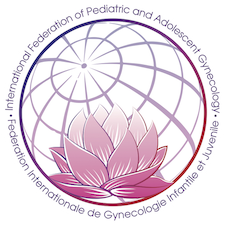Purpose
The International Federation of Pediatric Adolescent Gynecology (FIGIJ) supports the initiation of single-dose human papilloma virus (HPV) vaccination programs, especially in low- and middle- income countries (LMICs) where they can have the greatest impact. A recent review by Gallant et al in the Journal of Pediatric Adolescent Gynecology provides ample evidence for support of this strategy, highlights of which are emphasized in this advocacy statement.
Background
Cervical cancer is the world’s fourth cancer type among women after breast, colorectal and lung cancer. It affects more than half a million women annually, and it caused 311,000 deaths in 2018. 84% of invasive cervical cancer cases occurs in LMICs, and low-income nations bear 88% of this type of cancer’s mortality rate.
90% cervical cancer is caused by high risk HPV, and that 80% of women are infected with HPV at some point in their lifetime. Persistence of HPV infection and development of cervical dysplasia are the greatest risk factors for cervical cancer.HPV vaccination and cervical dysplasia screening programs are the major public health strategies to prevent cervical cancer in the general population. HPV vaccination is safe and effective, and would have the greatest impact in prevention of cervical cancer in resource-poor countries where screening is unaffordable or unavailable, treatment options are limited, and morbidity and mortality remain high.
Current Global HPV vaccination coverage
While 80%of high income countries have implemented HPV vaccine programs, only 41% of LMIC have vaccination programs, resulting in 15% global HPV vaccination coverage.
Reflecting the implementation of HPV vaccination programs in HIC, by 2014, 32% of females aged 10-20 had received the full course of the HPV vaccine, while 41% had
received at least one dose. In contrast, in Latin America, 19% of females aged 10-20 had received the full course of the vaccine, and 22% had received at least one dose. A large majority of the female population worldwide, but concentrated in Africa and Asia, have still not been vaccinated. This means that the most vulnerable populations, which would benefit most from vaccination, remain unprotected.
Evidence for Single-Dose HPV Vaccination Efficacy
Current WHO guidelines recommend a 2-dose vaccination for girls between age 9-14 years, ideally prior to onset of sexual activity and exposure to HPV. HPV vaccines are known to be highly immunogenic, and the earlier they are given the higher immune response is achieved. In fact, several studies are now assessing the level of protection against cervical cancer from a single dose. Observational studies carried out in the last decade have shown that a single dose of the HPV vaccine can achieve a good level of protective antibodies for at least 7-10 years. The Costa Rica Vaccine Trial (CVT), the Papilloma Trial against Cancer in Young Adults (PATRICIA) and a large Indian research project conducted by Sankaranarayanan et. al. suggest that a single dose of the vaccine provides long-lasting protection against infections with HPV 16 and 18. In their review, Gallant et al cited 8 large multinational, multiethnic long-term studies, including those mentioned, which demonstrate observational data that single doses of HPV vaccination provides at least 7-10 years of prevention against persistent HPV and cervical dysplasia.
Equity in HPV vaccination
The COVID pandemic and COVID vaccine implementation has highlighted global disparitiesinvaccination. Throughcost-effectivestrategies,thesignificantburdenof HPV-related disease can be reduced in LMICs. School-based single dose HPV vaccination, done when girls are aged 9-14 years would provide optimal coverage especially in poorer countries, where continuation through secondary education is lower for girls. Sexual assault and abuse of girls is unfortunately a global issue, and HPV vaccination may help prevent cervical cancer as a sequela in this very vulnerable group. Single-dose vaccination will increase the vaccine dose availability, supply of which has been noted to be low at the moment. Finally, single dose vaccination will facilitate vaccine access and affordability for LMIC.
Call for action
- Increased availability of HPV vaccination globally, including LMICs.
- Where possible, WHO guidelines recommending 2-dose vaccination for age 9-14 year olds should be followed.
- Consideration of global endorsement of single-dose HPV vaccination, especially for LMICs where access is currently limited.
Copyright FIGIJ 2021
Judith Simms-Cendan, MD, United States
Clara Di Nunzio, MD, Argentina
Anastasia Vatapoulou, MD, Greece
